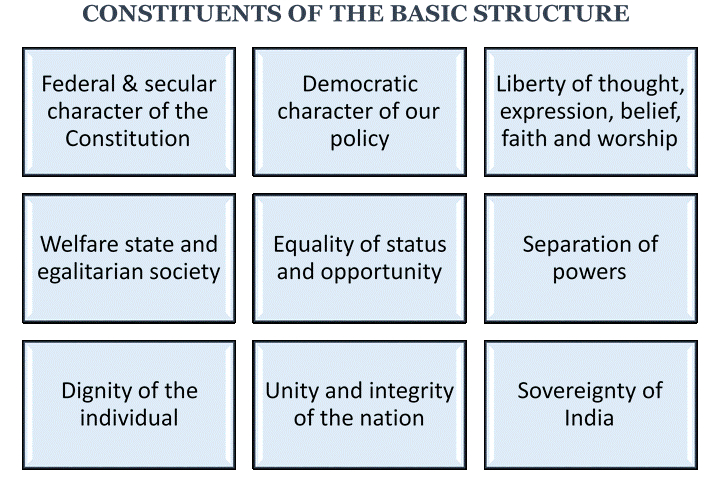Bangladesh, and others in the Commonwealth have imported Indian judicial intervention Basic Structure Doctrine which reflects advocacy, idealism and independence.
It is a constitutional principle that limits the power of Parliament to amend the Constitution and preserves its essential features.
It is a form of judicial review that is used to test the legality of any legislation by the courts.
It protects democracy from being distorted or destroyed by Parliament, and gives the courts the authority to decide what constitutes the Basic Structure Doctrine.
Over the years, various facets of the basic structure doctrine have evolved, and are not openly defined by the judiciary

|
Key judicial cases |
Major verdict |
|
Shankari Prasad Case (1951) |
The Court upheld that under Article 368, the Parliament has the power to amend the Constitution including the Fundamental rights. |
|
Sajjan Singh v. State of Rajasthan (1965) |
The Court reiterated the Parliament’s power to amend any part of the Constitution |
|
I.C. Golak Nath v. State of Punjab (1967) |
The Supreme Court held that Parliament could not curtail fundamental rights guaranteed under the Constitution. |
|
Kesavananda Bharti Case (1973) |
The Supreme Court held that although Parliament has the power to amend any part of the Constitution, it could not use this power to alter or destroy its “basic structure”. |
|
Indira Gandhi v. Raj Narain (1975) |
The basic structure theory was applied for the first time and the independent conduct of elections was categorized as basic structure |
|
Minerva Mills case (1980) |
It pertained to the 42nd Amendment Act introduced by the Indira Gandhi government. In a majority verdict, the top court upheld the power of judicial review of constitutional amendments. |

Living spirit - The basic structure of the Constitution is its living spirit, holding up the body of its text.
Soul of the Constitution - It is the soul of the Constitution, inextricably linked to the values enshrined in the Preamble, without which the document and the ideas that make it sacred would collapse.
Bedrock of constitutional interpretation - Granville Austin’s Working of a Democratic Constitution said that the basic structure doctrine is fairly said to have become the bedrock of constitutional interpretation in India.
Secure the rule of law - The courts have clarified that the basic structure aims to secure the rule of law essential for preservation of the democratic system.
Role of the judiciary- It holds the judiciary as the final interpreter of our Constitution.
Ensures checks and balances- It is applied to constitutional amendments to ensure the amendment does not dilute the fundamentals of the Constitutional itself.
Article 368 in Part XX gives the Parliament the power to amend the Constitution and its procedure.
Check on majoritarianism- It checks the impulses of the Parliament since it places substantive limits on the power to amend the Constitution.
Safety valve- Upendra Baxi said that the doctrine is useful to apply the brakes when the engine of amending power threatened to overrun Constitution.